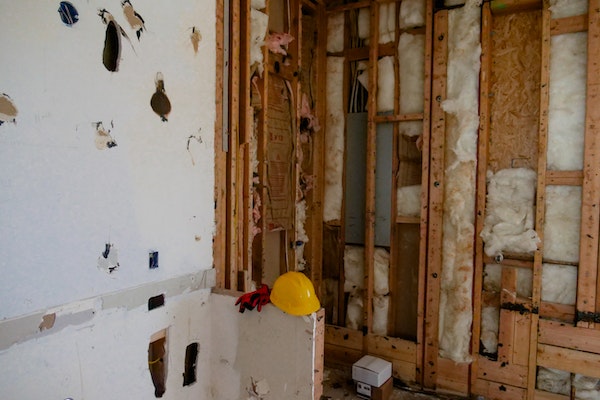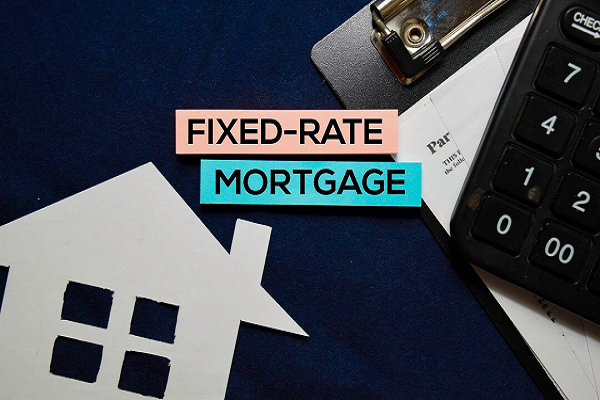Can I Borrow Money to Buy a House at Auction?
For many aspiring homeowners, the idea of purchasing a house at auction is an enticing prospect. Auctions often present the opportunity to acquire a property at a potentially lower cost than its market value. However, the challenge lies in securing the necessary funds quickly to participate in such a time-sensitive process. This is where bridging loans come into play, offering a flexible and efficient solution to bridge the financial gap. In this blog post, we will explore the question, “Can I borrow money to buy a house at auction?”
Understanding the challenge
Buying a house at auction requires a rapid and substantial financial commitment. Traditional mortgage processes can be time-consuming and may not align with the urgency of auction timelines. Additionally, auction properties often require immediate deposits, making it challenging for potential buyers to arrange financing through conventional channels.
The solution: bridging loans
Bridging loans serve as a short-term financing option designed to “bridge” the gap between the purchase of a new property and the sale of an existing one or another long-term financing solution. These loans are known for their speed and flexibility, making them an ideal choice for those looking to secure funds quickly for a property auction.
BridgingLoans.co.uk: your trusted partner
As a leading financial service provider, we specialise in offering bespoke bridging loan solutions tailored to individual needs. Here’s why we stand out from the crowd:
- Speedy approval process: We understand the time sensitivity of property auctions. Their streamlined application and approval process ensures that you can access the funds you need promptly.
- Flexible repayment terms: The flexibility of bridging loans allows borrowers to repay the loan once their long-term financing solution is secured. BridgingLoans.co.uk works closely with clients to design repayment plans that align with their financial circumstances.
- Specialised expertise: With years of experience in the industry, BridgingLoans.co.uk has developed a deep understanding of the property market. Their team of experts can provide valuable insights and guidance throughout the loan process.
- Competitive interest rates: We are committed to offering competitive interest rates, ensuring that borrowers can access the funds they need without compromising their financial stability.
Buying a house at auction can be a lucrative investment, but the key lies in securing the necessary funds swiftly. Bridging loans present a viable solution for individuals looking to capitalise on auction opportunities. With our expertise, efficiency, and commitment to client satisfaction, we stand as a reliable partner in your journey towards homeownership. Consider exploring the possibilities of bridging loans to turn your auction dreams into reality.
How do I Stop Repossession Proceedings?
Facing repossession proceedings can be an overwhelming and stressful experience. However, it’s crucial to know that there are avenues available to stop repossession and regain control of your financial situation. In this blog post, we’ll address the question, “How do I stop repossession proceedings?” and shed light on the potential solution of using a bridging loan to navigate through these challenging times.
Understanding repossession proceedings
Repossession proceedings typically begin when a homeowner falls behind on mortgage payments. In such cases, the lender may take legal action to repossess the property to recover the outstanding debt. It’s a distressing situation, but there are steps you can take to intervene and prevent the repossession process from moving forward.
- Open communication with your lender: The first and most important step is to communicate openly with your lender. Explain your financial difficulties and demonstrate a willingness to find a solution. Some lenders may be open to renegotiating the terms of your mortgage or offering temporary relief.
- Seek professional advice: Consult with financial advisors or housing counsellors who specialise in foreclosure prevention. They can provide valuable insights, assess your financial situation, and guide you through available options.
- Consider a bridging loan: One effective strategy to halt repossession proceedings is to explore the option of a bridging loan. Bridging loans act as short-term financing solutions, providing the funds needed to settle outstanding mortgage arrears and stop the repossession process.
Using bridging loans to halt repossession:
Bridging loans can be a lifeline for homeowners facing repossession. Here’s how these loans can help:
- Immediate access to funds: Bridging loans offer a quick and straightforward application process, providing borrowers with swift access to the funds they need. This speed is crucial when dealing with repossession proceedings, as time is of the essence.
- Settling mortgage arrears: Bridging loans can be used to settle outstanding mortgage arrears, bringing your account up to date and preventing the repossession process from advancing further.
- Temporary financial relief: Bridging loans provide a temporary financial solution, giving homeowners the breathing room needed to address their financial challenges. This temporary relief allows you to explore long-term solutions without the immediate threat of repossession.
In conclusion
Stopping repossession proceedings requires proactive measures, and exploring a bridging loan is one such strategy that can provide swift and effective financial assistance. If you find yourself in a challenging situation, don’t hesitate to reach out to your lender, seek professional advice, and consider the option of a bridging loan to regain control of your financial future. Remember, timely action is crucial in preventing repossession, and there are resources available to help you navigate through these difficult times.
How to Finance the Purchase of a Listed Building
Ownership of a listed building in the UK comes with a long list of pros and cons.
On the plus side, you may find yourself in possession of a completely unique property with the potential to generate huge capital gains over the course of time. Not to mention, it is an inspiring place to call home for yourself and your family.
In terms of disadvantages, the upkeep of a listed building can be much more of a challenge than that of a conventional home. There may also be strict limitations placed on modifications that can be made to the property (inside and out), ruling a great many potential renovations and improvements out of the equation.
Then comes the small matter of funding the purchase of a listed building, which is not quite as easy as simply shopping for a conventional mortgage.
There are three types of listed properties in England and Wales, which in all instances call for an entirely different type of mortgage:
- Grade 1: Buildings of outstanding or national architectural or historic interest
- Grade 2: Particularly significant buildings of more than local interest
- Grade 2: Buildings of special historic or architectural interest
The overwhelming majority of listed buildings (around 92%) fall within the Grade 2 category. This means the lowest level of protection and preservation, but at the same time, it can still result in major restrictions on what can actually be done with the property you buy.
For example, you may need to obtain formal planning permission simply to upgrade the windows or doors or to install exterior decking.
But many would argue that what you get in return more than justifies the downsides. Living in a listed property can be a genuine joy, but how do you fund the purchase of a listed building in the first place?
The Grade 2 listed property mortgage market
Qualifying for (or even tracking down) a mortgage for a Grade 2 listed property on the High Street can be difficult. Many lenders do not offer such products at all, and those that do have a tendency to restrict them to borrowers who fulfil fairly extensive eligibility requirements.
For example, interest rates on a mortgage for a listed property will usually be similar to those of a conventional mortgage. But while a standard mortgage may call for a minimum deposit of just 10%, it is often necessary to provide a deposit of 25% to 30% for a specialist mortgage for a listed building. In addition, it is not always possible to take out a mortgage on a listed building over a term of more than 20 years.
Mortgage availability and qualification criteria differ significantly from one type of listed building to the next. In the case of a listed property that features outbuildings, comes with a significant amount of land attached, or is used for any type of commercial or semicommercial purposes, finding an accessible and affordable mortgage can be more difficult.
Purchasing listed properties with specialist loans
Enlisting the support of an experienced broker can simplify the process of tracking down an affordable mortgage for a listed property. There are countless options available on the secured lending market, including short-term bridging loans.
Unlike a traditional mortgage, a bridging loan can be arranged within a few working days, and the funds can be used to purchase any type of property in any state of repair. They can also be taken out by individuals with poor credit, no formal proof of income, or even a history of bankruptcy. Whether you are planning to live in the property yourself, retain ownership for BTL purposes, or sell it on for capital gains upon completing any necessary refurbishments, a bridging loan can be a uniquely flexible and cost-effective solution.
How to Sidestep the Risk of a Broken Property Chain
Research from Home Selling Expert suggests that a full 31% of all UK home sales fall through at least once before a transaction is completed. This essentially means that buyers and sellers alike have a one in three chance of their plans being laid to waste by broken property chains.
A broken property chain occurs when one or more links in the chain of buyers and sellers fall through, resulting in the entire process being delayed or falling apart. This can be frustrating and costly for all parties involved, but it is also something that can be avoided in many instances.
Of course, there is very little anyone can do to control the behaviour of others involved in a property chain. Buyers and sellers alike are at the mercy of others within the chain, over whom they have little to no influence.
Even so, there are several steps that buyers and sellers can take to reduce the risk of a broken property chain.
Examples of these include the following:
- Be honest and open. It is important for buyers and sellers to be upfront about their circumstances and any potential issues that could affect their ability to complete the sale. This includes disclosing any financial issues, such as credit problems or debts, as well as any concerns about the condition of the property.
- Get a mortgage in principle: Buyers should obtain a mortgage in principle before starting the property search. This will give them a better idea of what they can afford and can also help speed up the process once a property has been found.
- Choose a reputable conveyancer: Both buyers and sellers should work with a reputable conveyancer to handle the legal aspects of the sale. A good conveyancer will be able to identify any potential issues and work to resolve them in a timely manner.
- Be prepared for delays. Even with careful planning, delays can still occur. It is important for buyers and sellers to be prepared for this possibility and to have contingency plans in place in case the sale is delayed.
- Be patient: The property process can be stressful and time-consuming, and it is important for all parties to remain patient and flexible.
- Get a survey: Both buyers and sellers should consider getting a survey of the property before the sale. This can help identify any potential issues and allow both parties to address them before the sale is completed.
- Consider a bridging loan: If there is a significant gap between the completion dates of the two properties, buyers may want to consider a bridging loan to cover the period in between. This can help reduce the risk of the sale falling through due to financial issues.
- Get a HomeBuyer report: A HomeBuyer Report is a detailed document that covers the condition of the property and any issues that need to be addressed. This can help buyers understand the true condition of the property and make informed decisions about the purchase.
Of the mitigation methods outlined above, the single best way to reduce the risk of a broken property chain is to accelerate the completion process with bridging finance.
Bridging loans afford mainstream bidders all the benefits usually reserved for cash buyers. Secured against the value of their current home, bridging finance can be arranged and accessed within a few working days, enabling buyers to beat competing bidders to the punch. For more information on any of the above or to discuss the benefits of bridging finance in more detail, contact a member of our team anytime for an obligation-free consultation.
Six Ways a Bridging Loan Can be Better Than a Mortgage
Most homeowners looking to relocate barely think twice about completing a mortgage application. They simply apply for and (perhaps) receive a mortgage instinctively, locking themselves into the same binding long-term agreements as everyone else.
But what if there was a better way for existing homeowners to move to new homes without going down the usually complex and costly channels? Are there flexible, accessible, and affordable alternatives to conventional mortgage loans that are broadly available to mainstream borrowers?
Surprisingly, the answer is yes, and it takes the form of bridging finance.
To put the whole thing into some kind of perspective, here are just six of the countless ways a bridging loan can be better than a mortgage:
- Faster applications: With a mortgage application, it is not uncommon to wait up to 8 or even 12 weeks to gain access to the money you need. With bridging finance, the whole process can be wrapped up in just a few working days, never more than a couple of weeks. When time is a factor (which has a tendency to apply to all property purchases these days), bridging finance can be so much faster to arrange than a conventional mortgage.
- Property purchases for cash: With bridging finance, you essentially turn yourself into a cash buyer. By doing so, you gain access to all the benefits usually reserved for those who buy homes for cash. You can bid on properties at auction, you can place offers on off-market properties of all kinds, and you can qualify for preferential rates by buying your next home for a single (and fast) lump-sum cash payment.
- Easy to obtain: Comparatively speaking, obtaining a bridging loan can be surprisingly straightforward. Eligibility criteria for bridging loans tend to be much more relaxed than with a conventional mortgage. Your credit history and income level will not necessarily stand in your way, just as long as you provide your lender with proof of a viable exit strategy (how you intend to repay your loan). It is even possible to qualify for bridging finance with no formal proof of income and/or a history of bankruptcy.
- Can be used to purchase any property: Major banks place heavy restrictions on the kinds of properties their mortgages can be used to purchase. Elsewhere, bridging loan specialists place no such restrictions whatsoever on their products. If you qualify for a bridging loan, you can use the funds to purchase any type of property you like. This includes properties that would normally be considered ‘not mortgageable’, making it much easier to pick up homes in questionable conditions to then renovate to a higher standard.
- Rock-bottom interest rates: Bridging finance is designed to be repaid as promptly as possible and can be hugely affordable as a short-term solution. Interest is applied monthly at a rate as low as 0.5%, and all other borrowing costs are kept to the bare minimum. Most bridging finance specialists impose no fees or penalties for early repayment, meaning significant sums of money can be saved by repaying the full balance as quickly as possible. Unlike a mortgage, where early repayment can be extremely expensive, assuming it is even an option at all,
- No restrictions on spending: A traditional mortgage comes with the caveat of being issued exclusively for the purchase of a property. With bridging finance, the money can be used for absolutely any legal purpose whatsoever. You could use a chunk of the money to purchase a home or business property and spend the rest in any way you like. Lenders have little to no interest in how their money is to be used; they simply need to know that they will get it back in full and on time.
Skyrocketing Rent Prices Could Increase Irresponsible BTL Letting Practices
Average UK rent prices continue to break all records on file, yet the demand for quality rental properties across the country remains at an all-time high. As a result, many now believe that the potential profitability of BTL investments could lead to a major spike in irresponsible letting practices as many new landlords enter the market.
A poll conducted by Get-Ground found that more than 80% of established landlords believe current market conditions could trigger an increase in irresponsible BTL activities. 75% of those polled believe that tenants are finding themselves with little choice but to be less demanding and discerning, potentially playing into the hands of unscrupulous landlords.
From excessive monthly rent payments to higher utility bills to monthly rent hikes imposed without warning or justification, tenants are willing to accept wholly unacceptable treatment simply to gain and/or retain tenancies.
“With recent history as our guide, it’s easy to imagine how the PRS could be brought into disrepute by bad actors: disproportionately high rents, unexpected bill increases, unfairly terminated tenancies, and so on,” said Faizullah Khan, CEO at Get-Ground.
“Landlords and tenants alike need the right protections and safeguards to ensure none of this poor behaviour is able to happen, particularly as high mortgage and energy costs continue to put even more pressure on landlords to find means to stay solvent.”
A perfect storm
Khan’s sentiments were shared by Ben Beadle, CEO at the NRLA, who warned that the escalating living-cost crisis combined with skyrocketing monthly rents could create the ‘perfect storm’ for those affected.
“Get-Ground’s snap poll data highlights a perfect storm that’s coming, combining the increased cost of living with rising rents,” he said.
“That rents continue to rise is due to the impact of a lack of supply and record demand in the PRS—this is very much a problem of the government’s own making.”
Recent data published by the Office for National Statistics does not make reassuring reading for anyone already struggling to make ends meet. Average monthly rent prices are up across the entire country and are predicted to continue heading skyward over the months to come.
- Private rental prices paid by tenants in the UK rose by 4.0% in the 12 months to November 2022, up from 3.8% in the 12 months to October 2022.
- Annual private rental prices increased by 3.9% in England, 3.1% in Wales, and 4.4% in Scotland in the 12 months to November 2022.
- The East Midlands saw the highest annual percentage change in private rental prices (5.1%), while London and the North East saw the lowest (3.5%).
Source: ONS
While commenting on the findings, the ONS highlighted how some letting agents are actually registering fewer tenants, as they simply do not have the available inventory to support them.
“The Association of Residential Letting Agents (ARLA) reported in their Housing Insight Report that they are now seeing a slight decrease in the number of prospective tenants registered per branch because of the ongoing lack of supply. ARLA also reported an increase in rent prices was seen across the UK,” read the ONS report.
“The Royal Institution of Chartered Surveyors (RICS’) UK Residential Market Survey reported tenant demand remained strong across the lettings market, driving rents higher.”
“These supply and demand pressures can take time to feed through to the Index of Private Housing Rental Prices (IPHRP). This is because the IPHRP reflects price changes for all private rental properties, rather than only newly advertised rental properties.”
77% of Self-Employed Workers Concerned About Mortgage Eligibility
As mainstream lenders continue to tighten their lending practices, millions of prospective borrowers are finding themselves excluded almost entirely from consideration. According to a new study conducted by Pepper Money, more than three-quarters of self-employed workers now fear they will be unable to qualify for a mortgage.
Of the 6,000 people surveyed, 77% said that self-employed status can make it difficult or impossible to obtain mortgage approval. According to Pepper Money, the issue lies in the fact that most mainstream lenders expect to see three continuous years of profitability and financial stability when processing mortgage applications from self-employed workers.
Given how the vast majority of self-employed workers were adversely affected by COVID-19 restrictions, comparatively few are able to provide such verification of consistent financial performance.
Even though self-employed workers have made significantly more money this year than in the past two years, they are still finding themselves counted out of the running by many mainstream lenders.
The study also found that 20% of self-employed people say that their businesses made more than 10% more profit in the last year than the previous two years.
Seeking support beyond the high street
Speaking on behalf of Pepper Money, sales director Paul Adams advised those who may struggle to qualify for conventional products to consider the options available beyond mainstream high-street banks.
“The self-employed play a vital role in the country’s economy, and the respondents to the survey are largely correct in that it can sometimes be more difficult to secure a mortgage as a self-employed person, but it doesn’t have to be that way,” he said.
“There are many lenders that specialise in lending to self-employed customers, with criteria and processes that are designed to meet the particular circumstances of self-employment, including the ability to lend on the most recent year’s figures, which can make an important difference in helping the self-employed achieve the loan size they deserve.”
Mr. Adams also said that the benefits of specialist lending are by no means restricted exclusively to self-employed individuals.
“It’s not just the self-employed who can benefit from this specialist approach,” he added.
“Our research found a quarter of all workers earn variable income, either from overtime or bonuses, and the ability to consider this additional income is often an important factor in helping them achieve the mortgage they deserve.”
More competitive mortgage rates to come?
Looking at the bigger picture, confidence is growing among analysts that a gradual fall in average mortgage rates will creep into the equation over the next 12 months. Speaking on behalf of Octane Capital, chief executive Jonathan Samuels said that the average mortgage payer could see a reduction in their monthly repayments of as much as £188 by this time next year.
“Opting for a variable-rate mortgage will always be a gamble, as it leaves you susceptible to an immediate change in the cost of your mortgage repayments depending on the base rate set by the Bank of England,” he said.
“For many homebuyers, this gamble has largely paid off in recent years, with interest rates remaining at extreme lows for a prolonged period. However, so far in 2022, the cost of a variable-rate mortgage has continued to climb in line with interest rates, and last week we saw the largest single jump in over 30 years.”
“This will add a considerable amount to the monthly repayment of those opting for, or already on, a variable rate, and given the backdrop of the current cost of living crisis, it really couldn’t have come at a worse time.” “The good news is that we do expect the economy to settle to some extent in 2023, and while we don’t believe we will see a return to the record levels of affordability enjoyed previously, the monthly cost of repaying a mortgage should drop below the levels currently being seen across the market.”
UK-Based Lender Receives Authorisation to Offer 50-Year Fixed-Rate Mortgages
Next March, the UK’s Help to Buy scheme will be permanently withdrawn. Introduced in 2013, the programme was brought in as one of several measures to restart the housing market in the wake of the financial crisis of 2008.
Help to Buy gives homebuyers the opportunity to purchase new-build homes with a deposit of just 5%. As the average deposit requirements of most major lenders fall between 10% and 20%, Help to Buy offers a lifeline for those who would otherwise struggle to come up with this kind of money.
5% mortgages are in comparatively short supply on the High Street and are often accompanied by highly selective eligibility requirements, which is precisely why the introduction of an all-new mortgage at Perenna could come as welcome news to anyone with affordability concerns.
The UK’s first and only 50-year fixed-rate mortgage
Perenna reported this week that a commission has been granted by UK regulators to offer a fixed-rate mortgage over a term of 50 years. The product will be initially introduced as a 30-year fixed-rate mortgage, after which further options will be rolled out for up to five decades.
These products could prove highly disruptive for the sector, given how most major lenders offer fixed-rate mortgages over a maximum of 10 years.
Importantly, Perenna’s long-term fixed-rate mortgages will be offered to first-time buyers in the form of a 95% LTV loan, requiring a deposit payment of just 5%. Homeowners looking to relocate or remortgage will also be eligible for Perenna’s long-term fixed-rate products, enabling them to lock in competitive rates of interest for the life of their loan.
Benefits for private borrowers and businesses
Speaking on behalf of Perenna, CEO and founder Arjan Verbeek highlighted the potential benefits of these new long-term loans for private borrowers and businesses alike.
“It is very exciting to be a bank that is authorised with restrictions, and it is a major milestone for the team. The UK financial infrastructure requires significant innovation to get growth back and reduce inequality. Perenna will be the blueprint to deliver this for mortgages as well as SMEs and infrastructure,” he said.
“Perenna will support consumers with buying their first homes, moving home, supporting themselves in retirement, and helping the transition to net zero. Perenna looks forward to working with other initiatives to increase private sector investment in the real economy and address the structural challenges we face.”
More details are expected to be confirmed by Perenna ahead of the launch of the new products, which are expected to offer 30- to 50-year fixed interest rates of around 4% to 5%. However, this could be significantly influenced by economic shifts in the interim and the general state of the mortgage market at the time.
The approval of the new product comes as the Bank of England once again raises interest rates in an effort to quell inflation, which is now at a 40-year high. Further interest rate hikes are almost certainly on the cards, with inflation said to peak at 12% or higher in the New Year.
Average house prices continue to break records across the UK, with the biggest annual price increases of all having been recorded in London. Even as the UK’s escalating living-cost crisis was hitting households hard, the average price of a home in London hit an astonishing £526,183 in May, more than 8% up on the previous year.
Detached homes in London saw the biggest annual price growth of all, up just over 11% to reach £1,082,09, compared to £973,866 a year earlier.
“With the Bank of England putting up interest rates more than once this year, many house hunters have also established a stronger sense of urgency to buy before further rate hikes,” commented Richard Davies, managing director of London agents Chesterton’s.
“Our branches receive inquiries from families, couples, and investors, but, particularly post-pandemic, we are seeing an uplift in the number of international students, international buyers, as well as office workers who require a pied-à-terre closer to work.”




 0116 402 7982
0116 402 7982







